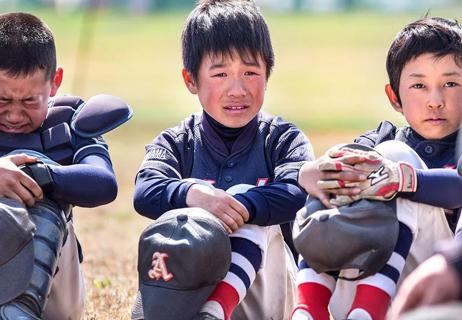Sailing between parenting styles in specific situations is key

Wondering whether you’re doing a good job raising your kids is probably something that keeps most parents up late at night.
Advertisement
Cleveland Clinic is a non-profit academic medical center. Advertising on our site helps support our mission. We do not endorse non-Cleveland Clinic products or services. Policy
A quick internet search for parenting tips will yield a plethora of advice for how to navigate the choppy waters of parenthood — and there are plenty of blogs out there that point to this parenting style or the next as the map to follow if you want to raise a bright, empathetic and independent child.
There are four main parenting styles people commonly embrace:
But what a lot of parenting blogs won’t tell you is that these parenting styles aren’t meant to be followed 24/7 as categorically correct forms of parenting. Instead, they’re much more like the code of honor in the movie Pirates of the Caribbean: They’re more like guidelines than actual rules.
When trouble surfaces or you need to batten down the hatches, you should feel free to switch between each parenting style whenever the right situation calls for it.
“A lot of times, people are quick to try and categorize themselves as though these are categories that you fit into entirely,” says clinical counselor Jeffrey Jack, LPCC. “A more accurate representation of what happens with parenting styles is that every single interaction you have with a child falls somewhere on the spectrum of these parenting styles.”
Advertisement
Like any good parent, when you feel a bit lost at sea, it’s nice to have a potential path forward that helps strengthen your relationship with your child and provides ample opportunities for them to learn and develop accordingly. And like any good captain in charge of their crew, being conscious about the kind of parent you want to be is a good place to start.
“People should consider what they think their job is as a parent,” says Jack. “Some people see themselves as a protector of their child from the difficult things that exist in the world. Other people see their job as a parent is to make sure their child is eventually financially or academically successful.
“Others want to make sure their child is a good and moral human who can be decent to others. And for most people, it’s actually a combination of all these things.”
Jack breaks down what’s unique to each of the parenting styles. Plus, he offers an explanation as to why parents might want to strive for an authoritative parenting style in most situations, as other parenting styles can have significant negative downstream effects on kids as they develop into adulthood.
Authoritative parenting couples the best parts of parenting with high expectations of enforced rules and boundaries and very high levels of affection and encouragement.
“Generally speaking, we want parents to mainly strive toward an authoritative style because it’s highly structured but has high levels of praise and affection,” explains Jack. “Using this parenting style will allow parents to manage most situations effectively.”
In fact, many studies suggest authoritative parenting styles are associated with higher levels of self-efficacy and increased intention to perform better in an academic environment.
“When you take a high level of being directive and a high level of regard for your child and put them together, what that looks like is compromise, negotiation and working reasonably with other people,” he further explains. “It’s the ability to work with others in a way that you don’t really see modeled very well with permissive, neglectful and authoritarian parenting styles.”
For example, let’s say your child has an 8 p.m. bedtime on weekdays. Your child understands this rule, but they come to you and say, “I have a big test tomorrow. I know bedtime is usually 8 p.m., but what if I stayed up another hour to review my homework?” In this example, putting on an authoritative hat and allowing negotiation for this strict rule can be helpful because it further develops your relationship with your child and it acknowledges that they may have a solid foundation for approaching rules and boundaries in a different, more productive way.
Advertisement
“Authoritative parenting doesn’t mean the parent is going to say yes or no, but it means there’s at least room for discussion,” notes Jack. “That tends to be helpful because that’s pretty consistent with how the world works.”
Let’s look at another example: During recess, your child was being bullied and they chose to fight back. Because of this, the school called and let you know that your child was suspended from school for three days because of fighting. You have a strict rule that fighting isn’t allowed and you should never inflict physical harm on anyone.
An authoritative parent would address the situation by having the child explain how they were feeling in the moment they started fighting, by reinforcing that fighting and violence is never OK, and by acknowledging that you understand they were caught up in an impossible, hard-to-navigate situation.
“The authoritative parent recognizes it’s a very extreme example and they’re present with that child inside of that difficult situation, making sure they understand the appropriate boundaries,” says Jack. “And then, they shift to figure out how they can help that child emotionally through this situation and what next steps should be taken to stop this from happening to them in the future.”
Advertisement
By negotiating with your child during difficult moments, you can help them become more aware of how they’re feeling and instruct them on how to respond to those feelings in an effective way while supporting them emotionally. The result is a well-rounded experience that allows for greater awareness and self-regulation — all things that make for a good gentle parenting experience.
“Parents who are capable of authoritative parenting are capable of all the tools from the other styles, but they also have the perspective of knowing when to dial up or down on affection, or dial up or down on enforcing rules or boundaries based on what a situation calls for,” Jack continues. “The other three parenting styles are only something to be used if authoritative style judgment deems it so in specific situations.”
With permissive parenting, rules and boundaries are a bit more relaxed.
“When permissive parenting is embraced as a total strategy, the child often gets away with mutiny and the child becomes the captain of the ship. In those situations, the parent often seems more like the first mate than the captain,” explains Jack. “But it may still be useful to let your child steer the ship off course once in a while in exchange for positive developments in your one-on-one relationship.”
Advertisement
While there aren’t a lot of boundaries enforced when permissive parenting is happening, there’s a high level of affection and reinforcement.
“It’s not just important that you develop a good relationship with your child, it’s necessary for that child to be willing to adapt and to feel safe and develop a sense of self-efficacy (or belief in yourself),” he adds.
If your child’s bedtime, for example, is usually 8 p.m. on weekdays, but you’re on vacation and they want to stay up a little later than normal, an authoritative parent might take a permissive parenting approach by allowing them to stay up a little later in exchange for spending quality time with your family.
“That might be a time to be a bit more of a permissive parent and a productive way to further develop your relationship with your child,” he says.
Let’s revisit the fight at recess for another example of a permissive parenting moment. In normal circumstances, you might discipline your child for fighting with their siblings or other kids by taking away access to video games or calling for a timeout.
But if your child chose to fight back during recess because they were being bullied and felt like they had no other option, that might be a time to be more permissive about their behavior. Instead of disciplining them for defending themselves, you might sit with them instead and gently guide them toward taking other options like running toward an adult for help when things go south.
“It’s really important that your child is able to recognize their emotions and figure out what to do with them,” says Jack. “Often, that comes along with parents being present to help that child through difficult emotional states or heightened moments of emotion.”
Of course, like with anything, too much of a good thing can cause problems in the long run. If permissive parenting is the dominant way in which you engage with your child, it could lead to them developing an overall difficulty understanding and handling rules and boundaries, or it could cause them to have difficulty maintaining independence.
“Kids of predominantly permissive parents may have more difficulty adhering to rules, and they may have more difficulty understanding why they have to do something someone else’s way rather than just doing what they want to do,” Jack points out. “The other thing that can happen is a child will get used to using the adults in their life as a coping tool and they could have difficulty learning to do it themselves.”
A 2016 study of 524 undergraduate students showed students who came from predominantly permissive parenting households had a greater degree of stress, difficulty with emotional regulation and poorer mental health when navigating collegiate life. Another study suggests permissive parenting may be closely related to a higher risk for narcissism in young adults.
“The time to really embrace permissive parenting is when your primary goal is relationship building or if you feel your child is in a position that requires a high degree of emotional support,” advises Jack.
This parenting style could be viewed as direct opposition to permissive parenting with low levels of affection coupled with an enforcement of high standards, rules and boundaries. You’re steering the ship, you’re setting the path forward and there’s little-to-no wiggle room for veering from the path you put in place. This more forceful form of helicopter parenting could pose a problem if this is the dominant way you engage with your child on a day-to-day basis.
A nationwide survey in 2016 revealed youth 12 to 17 were more likely to report having depressive symptoms when living in a predominantly authoritarian household. Another study from 2017 explained that higher levels of authoritarian beliefs were associated with more hostile parenting practices like yelling or hitting.
In effect, a predominantly authoritarian household can be disruptive to a child’s relationship with their parents and create a toxic environment for everyone involved. But that’s not to say that there’s never a place for authoritarian parenting. It’s actually most useful when you’re faced with true non-negotiables — things that put your child in a state of danger, serious harm or real trouble.
“Good examples of the authoritarian parenting style are all going to come back to stopping things that are either dangerous or when a child might get into some serious trouble,” notes Jack. “It’s usually useful when a child’s thoughts, opinions and actions need to be disregarded.”
For example, if your child is running toward a busy street with no signs of slowing down, that’s not a time to be permissive nor a time to consider what they want on the other side of the street.
“That’s a time to be extremely strict and make sure that when you say, ‘Stop,’ they stop,” states Jack. “It’s a tool to keep your child safe in that moment.”
If you need to mediate conflict by physically restraining them or getting between them and another person, that’s an authoritarian action that might be needed to prevent them from physical or emotional harm. And if you feel like this is something that could occur or might be needed, it’s probably a good idea to talk with a pediatric behavioral specialist to try and find other options to stop these situations from happening long before they start.
Another good thing to remember is that kids often do what their parents do. And if you’re authoritarian all the time, your kids will likely pick up on that behavior.
“Authoritarian is not helpful in many situations,” notes Jack. “But it can be helpful in the most dire circumstances or when your child needs to be protected.”
Also referred to as the “uninvolved” or “maladaptive parenting style,” this carries a lot of negative connotations coupled with misconceptions about what parenting should and shouldn’t look like. At its core, neglectful parenting is characterized by very low levels of affection and very few, if any, enforced rules, requiring more independence from a child when a parent is otherwise preoccupied with other things.
If this is the predominant way you engage with your child, there are several studies that show there can be extreme downstream effects on your child’s development. One study suggests maladaptive parenting increases risk factors for developing borderline personality disorder. Another suggests neglectful parenting — along with authoritarian and permissive parenting — are often associated with higher levels of externalizing problems and not taking accountability for their own actions. And we know neglect can have a significant impact on the physical, mental and emotional health of developing children, as well as impact their ability to embrace healthy parenting styles down the line.
Knowing these things, we want to make sure that neglectful parenting is only used in highly specific situations that call for correct amounts of independence as is developmentally appropriate for a child’s age. And we also want to emphasize that, although working parents wrongfully get a bad rap for not spending enough time with their children, there are ways to avoid neglecting behavior by homing in on the time you do have outside of work.
“There are plenty of people out there who have exceptionally busy careers and are fantastic parents,” confirms Jack. “The amount of time you spend with your child isn’t really the deciding factor when determining if you’re having a positive effect on the relationship with your child, but it’s how you spend what extra time you have with them that matters most.”
Parents perhaps struggle most often with knowing when and how to let their child embrace independence, but in very specific circumstances, it can be somewhat helpful to take a more hands-off approach.
For example, it might not be as helpful to manage all of your child’s homework for them and make sure they get it done if they’re in high school. In those moments, it may be more helpful to pull a page out of the neglectful parenting handbook by letting them make their own mistakes, forget an assignment or two, and face the consequences of getting a bad grade so they can hopefully learn from their mistakes. And once a natural consequence of their actions occurs, parents can come right back to their standard authoritative responses.
The same can be said for the parent who chooses not to mouth the correct spelling of a word to their child who sits on stage during a spelling bee, or the parent who decides not to warn their child about stomping through rain puddles in their canvas shoes.
Sometimes, you have to let kids learn how to fail or discover how uncomfortable wet socks can be when you’re not properly dressed for pouncing in puddled water.
“There are times when it’s appropriate to let your child go off and do things and manage things for themselves, and often, this is more useful as kids get older,” advises Jack. “We want to give a child freedom to move around and figure things out, but not too much freedom.”
That means finding ways to offer new learning experiences that are developmentally appropriate.
“If we want our child to be capable of making their own meals at 12 years old, you need appropriate scaffolding,” he adds. “They probably won’t be able to make a seven-course meal on their own, but maybe they can have a box of macaroni ‘n’ cheese that has a couple simple steps that they can follow because they’re old enough to try doing that now.”
As you can see, parenting is like a high seas adventure, full of twists and turns. But the most important thing you can do as a parent is to find ways to be flexible and understanding as you try to navigate the challenges ahead for you and your children.
That takes being honest about what you expect from your tiny crew and holding them to task. But it also means dropping anchor whenever possible and pausing to take a moment and check in with your children to help them understand how they feel, how to respond to those feelings and how to improve upon their relationships with the world around them.
Parenting isn’t always smooth sailing, but it can be the adventure of a lifetime. You just have to know when to put on the right parenting hat and ask yourself: What kind of parent do I want to be in this very moment?
“Figuring out your parenting style involves being conscientious,” encourages Jack. “It depends on what the situation calls for and it depends on what your specific child needs in that unique situation. Sometimes, you just have to make the best call you can and go for it.”
Learn more about our editorial process.
Advertisement

From learning to change diapers to considering your parenting style, our advice for new dads

Being mindful of who you are as a parent not only benefits your child, but also you

The answer comes down to your child’s maturity

How to know if this parenting style is going too far

Grace and humility are important traits to develop at a young age

Teamwork truly does make a difference

If you’ve been letting a lot of things slide, learn how to reintroduce the rules

Type 2 diabetes isn’t inevitable with these dietary changes

Applying a hot or cold compress can help with pain